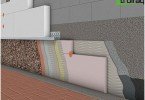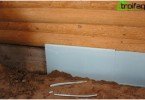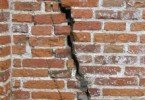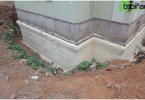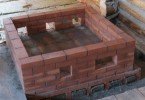How to make the formwork for the foundation
The foundation is the foundation of any building, and the foundation of the foundation is the right formwork, which you can do yourself. But how to make the formwork so that then there are no problems?
Content
- Varieties of formwork
- How to make formwork – a guide to action
Varieties of formwork
To begin with, it is worthwhile to understand what formwork is and why it is needed. Formwork is a structure used to build foundations from building mixtures, and it is needed in order to keep these mixtures inside and to prevent them from flowing out.
Formwork is removable and non-removable. For the construction of foundations, removable formwork is used from various materials: wood, metal or expanded polystyrene. Since the elements of the formwork are removed after the foundation has solidified, it is worthwhile to think in advance about what to make of it, because the appearance of the base of the building is as important as the interior decoration.
Fixed formwork is made from polystyrene foam, a material that can rightfully be considered the material of the future. Such formwork is very easy to build, lightweight, reduces financial and time costs for construction.
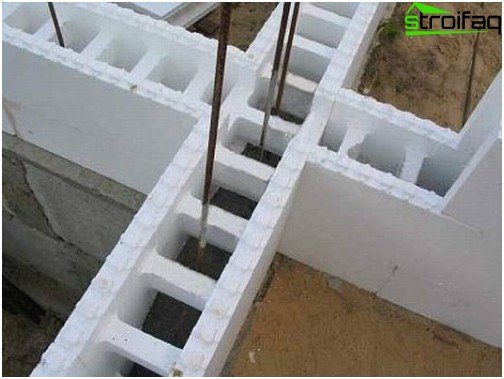
Easy budget formwork made of polystyrene foam simplifies and simplifies the process of building the foundation
How to make formwork – a guide to action
If you decide to build a house, garage, bathhouse or other structure and think about how to make formwork for the foundation, then you are on the right track, because before you start doing something, you should think everything through to the smallest detail so that you don’t bite in despair then elbows.
To create the formwork you will need tools and materials that can be purchased in the store or found in your bins. Today, in almost any hardware store you can buy metal forms with a perfectly flat surface, designed specifically for formwork. They are fixed to the frame using fasteners and bolts. The advantages of this design are obvious:
- ease of installation
- smooth foundation surface
- significant savings in building materials
- reduction of time for finishing work
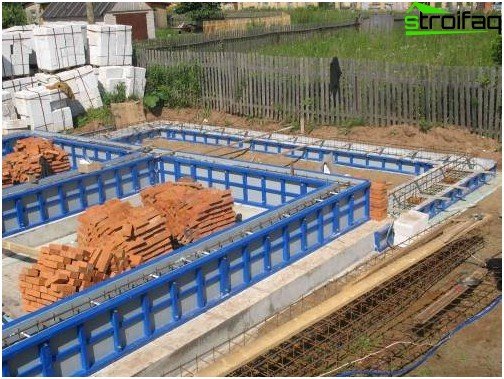
Metal formwork – robust supporting structure
But if you don’t have the opportunity to buy metal sheets, then it’s quite possible to do with a wooden board, but the process of creating such a formwork is a little more complicated and will require some skill and dexterity from you.
In fact, the pine board is the most ideal material for the construction of wooden formwork: it is durable and cheap. But its thickness, depending on the type and purpose of the foundation, should be different. So, for a strip foundation, a board of at least “forty” is needed, because it has to withstand a large amount of concrete.
Important: thin boards will not withstand the pressure of concrete and just fly apart.
After you remove the formwork frame, the boards can be further used in construction, for example, for rough finishing of the floor.
But for filling decorative paths in the garden, thin, narrow planks with a thickness of 0.1-0.3 cm are quite enough.
So, still, how to make formwork from boards?
First you need to drive along the perimeter of the marking wooden blocks (supports of the future formwork). The more of them, the more durable the design will be. Next, you need to fix the boards on the bars. This is done using ordinary nails, but they need to be hammered from the inside so that there are as few bumps as possible.
And to provide additional strength, you can fix wooden struts with a frequency of about one meter from the outside of the formwork.
Important: during the assembly of the formwork, check the level of horizontalness and verticality of its walls, otherwise the house (or what you build there) can turn out to be.
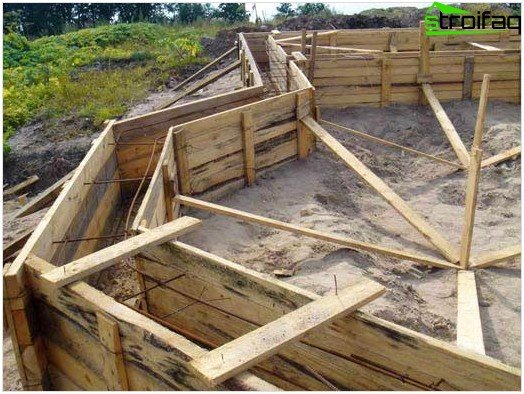
You can make formwork from lumber
After assembling and carefully checking the formwork, it must be covered with a broom and moistened well. This is done so that the tree does not pick up moisture from the concrete, thereby reducing its strength. if possible, you can use special waxed paper, which will also prevent the absorption of moisture into the boards. And now you can start pouring concrete mixture.
Important: it is necessary to remove the formwork approximately 2-3 weeks after pouring concrete, and it is even better to leave the sheets in place until the completion of construction work – so you will not damage the outer walls of the foundation, you never know what can happen on the site.
As you can see, there is nothing difficult in creating the formwork, the main thing here is not to rush and carefully check everything with a level. After all, there’s even a saying: “Hurry – you make people laugh”.


